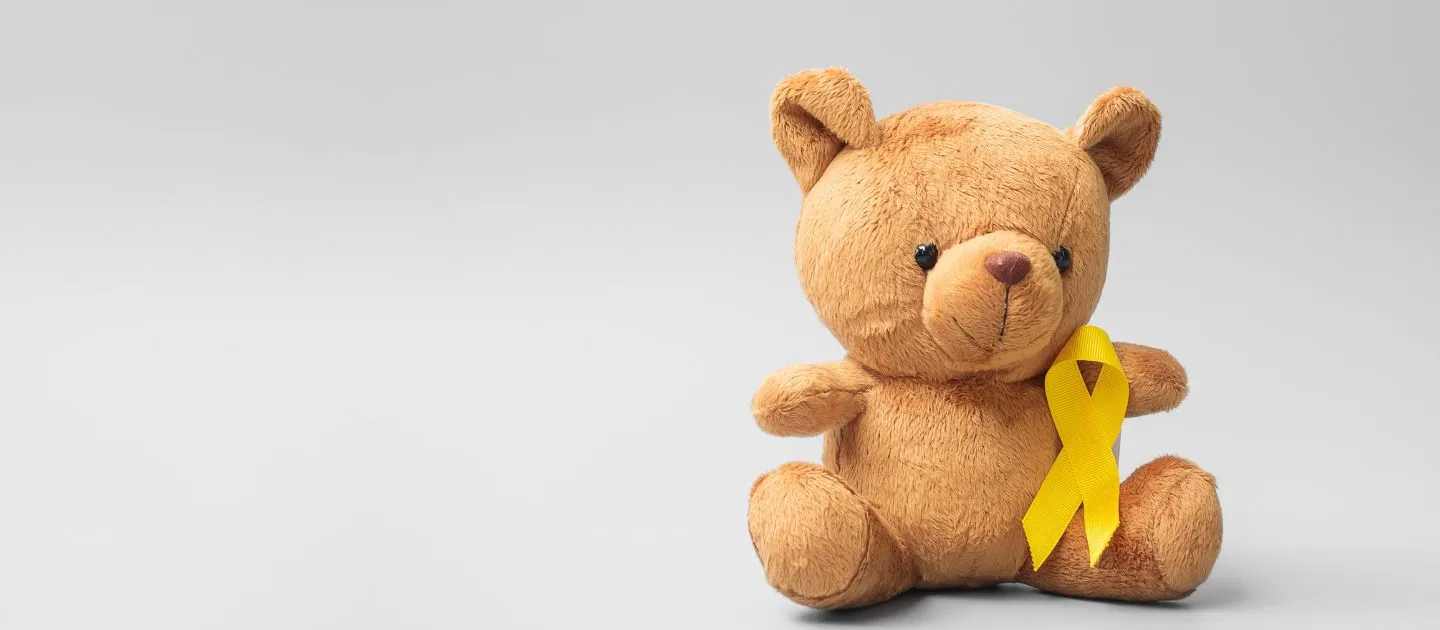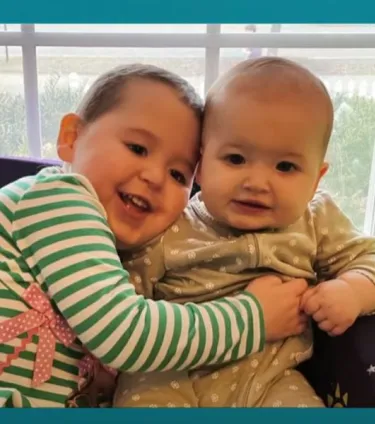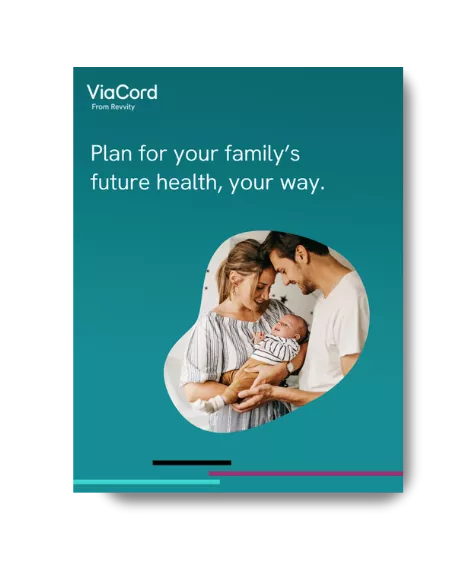Childhood Cancer Awareness Month
Shining a light on childhood cancer and the power of cord blood.
Childhood Cancer Awareness Month is a time to raise awareness, honor the strength of children and families affected by cancer, and inspire hope for a future where no child has to face cancer.
What Is Childhood Cancer?
Childhood cancer includes both pediatric cancers (affecting infants to children age 14) and adolescent cancers (affecting children age 15 to 19). The types of cancers seen in children are often very different from those seen in adults. The most common types include:
- Leukemia (especially acute lymphocytic leukemia or ALL)
- Brain and nervous system cancers
- Lymphoma (both Hodgkin and non-Hodgkin).
Although childhood cancer is considered rare, it remains the leading cause of death by disease among children in the U.S. Fortunately, survival rates have improved dramatically — from just 10% forty years ago to about 85% today.1,2
Childhood Cancer Awareness Facts
There 12 major types of pediatric cancer and over 100 subtypes. 3
_______
47 children are diagnosed with cancer each day in the U.S. 4
_______
Around 1,800 children in the U.S. lose their battle with cancer each year. 5
_______
There are approximately 500,000 childhood cancer survivors in the U.S today. 5
Treating Childhood Cancer
Treatment depends on several factors, including the type of cancer, how far it has progressed, and the child’s overall health. Most treatment plans combine multiple approaches, like surgery, chemotherapy, radiation, immunotherapy, targeted therapy, and stem cell transplants (also called bone marrow transplants).
In certain cases—especially with cancers like leukemia or lymphoma that affect the bone marrow—a stem cell transplant can be a critical part of treatment.
How Stem Cell Transplants Work
Bone marrow is the soft, spongy tissue inside our bones where important stem cells live. These stem cells are called hematopoietic stem cells (HSCs) and they make the blood and immune cells our bodies need to survive:
- Red blood cells (carry oxygen)
- White blood cells (fight infection)
- Platelets (help with clotting)
When cancer cells or intensive treatments like chemotherapy damage the bone marrow, it can no longer produce healthy cells. A stem cell transplant works to replace the diseased/damaged bone marrow with healthy HSCs, stimulating the body to start making healthy blood and immune cells again.
The power of stem cells in this process is truly remarkable!
A Valuable Source of Healing HSCs
Cord blood is the blood that remains in a newborn’s umbilical cord after birth. It’s naturally rich in hematopoietic stem cells and can be easily collected at birth and stored through cord blood banking for potential future use.
Umbilical cord blood has established itself as an important stem cell source because of the many benefits it offers compared with other stem cells and a viable treatment option for children with certain cancers.
Cord blood offers several advantages as a source of HSCs including:
Safe
Collection is simple, takes minutes, and poses no risk to the mother or baby.
Painless
Unlike bone marrow extraction (which is invasive and painful).
Youthful
HSCs from cord blood have demonstrated ability to divide faster and create more new cells than bone marrow (adult) stem cells.6
Effective
Cord blood stem cells have been used and proven effective in stem cell transplants for over 35 years.
What Childhood Cancers Can Use Cord Blood?
While most stem cell transplants require donor or sibling cells, a child’s own cord blood may be used in specific cases — such as neuroblastoma. Stem cells from cord blood can be used in the treatment of:
- Acute lymphoblastic leukemia (ALL)
- Acute myeloid leukemia (AML)
- Biphenotypic Leukemia
- Burkitt's lymphomaChronic myeloid leukemia (CML)
- Hodgkin's lymphoma Chronic myelomonocytic leukemia (CMML)
- Juvenile myelomonocytic leukemia (JMML)
- Lymphomatoid granulomatosis
- Mixed Lineage Leukemia
- Myelodysplastic syndrome (MDS)
- Myelofibrosis
- Neuroblastoma
- Non-Burkitt’s lymphoma
Non-Hodgkin's lymphoma
It's important to note that using cord blood does not guarantee a successful treatment outcome. Only a treating physician can determine if cord blood is a suitable option.
The Power of Siblings In Stem Cell Transplants
If a child requires a stem cell transplant as part of their cancer treatment, doctors will typically look first for a family member as the donor of stem cells for the transplant.7 Siblings have the highest chance of being an adequate match, due to shared genetics.8
In cases where a sibling's cord blood is available and matches the child in need, it can be a valuable resource and transplant option. Banked cord blood ensures quick access to HSCs when a transplant is needed, unlike bone marrow donation which requires a donor match, health tests and screening, scheduling, and an invasive procedure to extract the bone marrow from the donor - involving anesthesia and inserting a hollow needles into the back of the pelvic (hip).
Programs like ViaCord’s Sibling Connection help eligible families collect and store cord blood for free when a full sibling has been diagnosed with a condition that may require a transplant. While not every child with cancer will need a stem cell transplant, having access to a sibling’s cord blood can give families another potential path to treatment and healing.
Real Families. Real Hope.
In honor of Childhood Cancer Awareness Month, we’re sharing Rosalia’s story. Rosalia’s family is one of many ViaCord families who have bravely faced childhood cancer. Watch as Rosalia’s mother shares their family’s touching and inspiring journey — and how cord blood became part of their healing story.
Ways to Get Involved
If you’re looking to help raise awareness for childhood cancer, these resources can help get you started:
- Alex’s Lemonade Stand
- Children’s Cancer Cause: 10 Ways to Advocate For Kids with Cancer
- American Cancer Society
Disclaimer
Banking cord blood does not guarantee that treatment will work, and only a doctor can determine when it can be used. This is intended for educational purposes only and should not be used or interpreted as information on treatments or diagnoses. Family stories depict each family’s personal experience with cord blood banking. Individual results may vary and do not predict outcomes for others.
References
1. National Cancer Institute; https://www.cancer.gov/types/childhood-cancers/child-adolescent-cancers-fact-sheet
2. Cure Search For Children’s Cancer; https://curesearch.org/childhood-cancer-statistics
3. Children’s Cancer Causes; https://www.childrenscancercause.org/facts
4. Children’s Cancer Research Fund;
https://childrenscancer.org/education/childhood-cancer-facts/#:~:text=How%20common%20is%20childhood%20cancer,rare%E2%80%9D%20to%20get%20research%20funding.
5. Alex’s Lemonade Stand; https://www.alexslemonade.org/childhood-cancer/about-childhood-cancer/facts
6. Hao QL, Shah AJ, Thiemann FT, Smogorzewska EM, Crooks GM. A functional comparison of CD34 + CD38- cells in cord blood and bone marrow. Blood. 1995 Nov 15;86(10):3745-53. PMID: 7579341. https://pubmed.ncbi.nlm.nih.gov/7579341/
7. Texas Children’s Hospital; https://www.texaschildrens.org/content/conditions/stem-cell-transplant-donor
8. National Marrow Donor Program; https://network.nmdp.org/services-support/hematology-oncology/programs-guidelines/hla-typing-for-family-members













